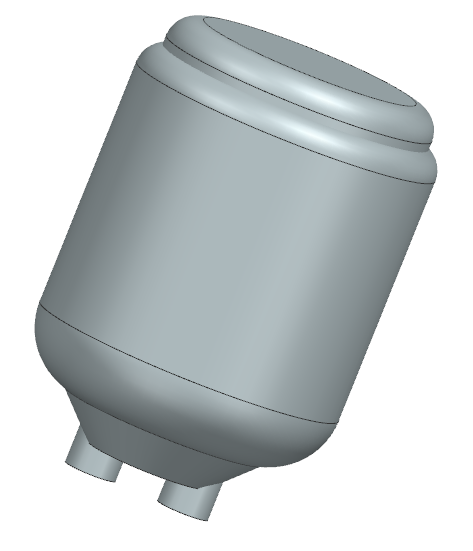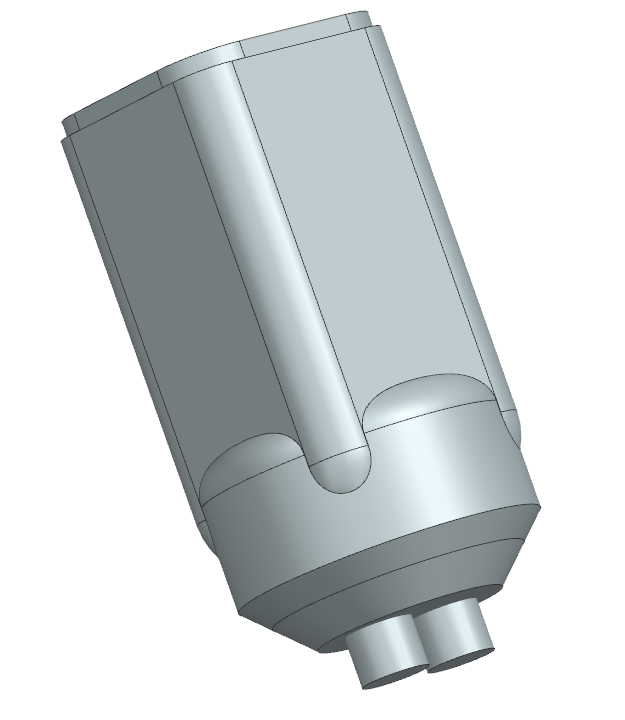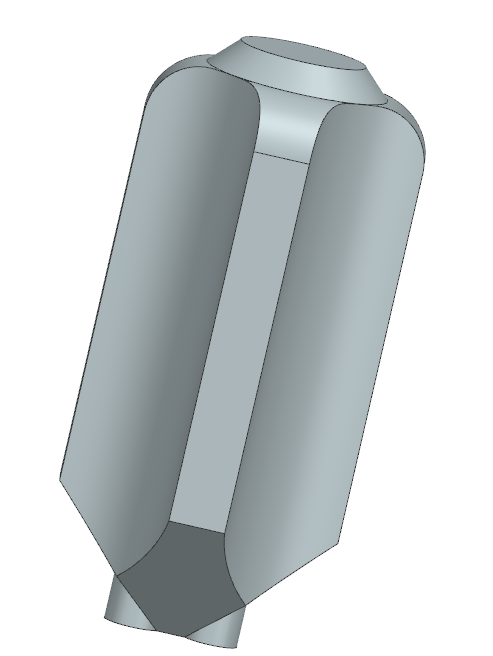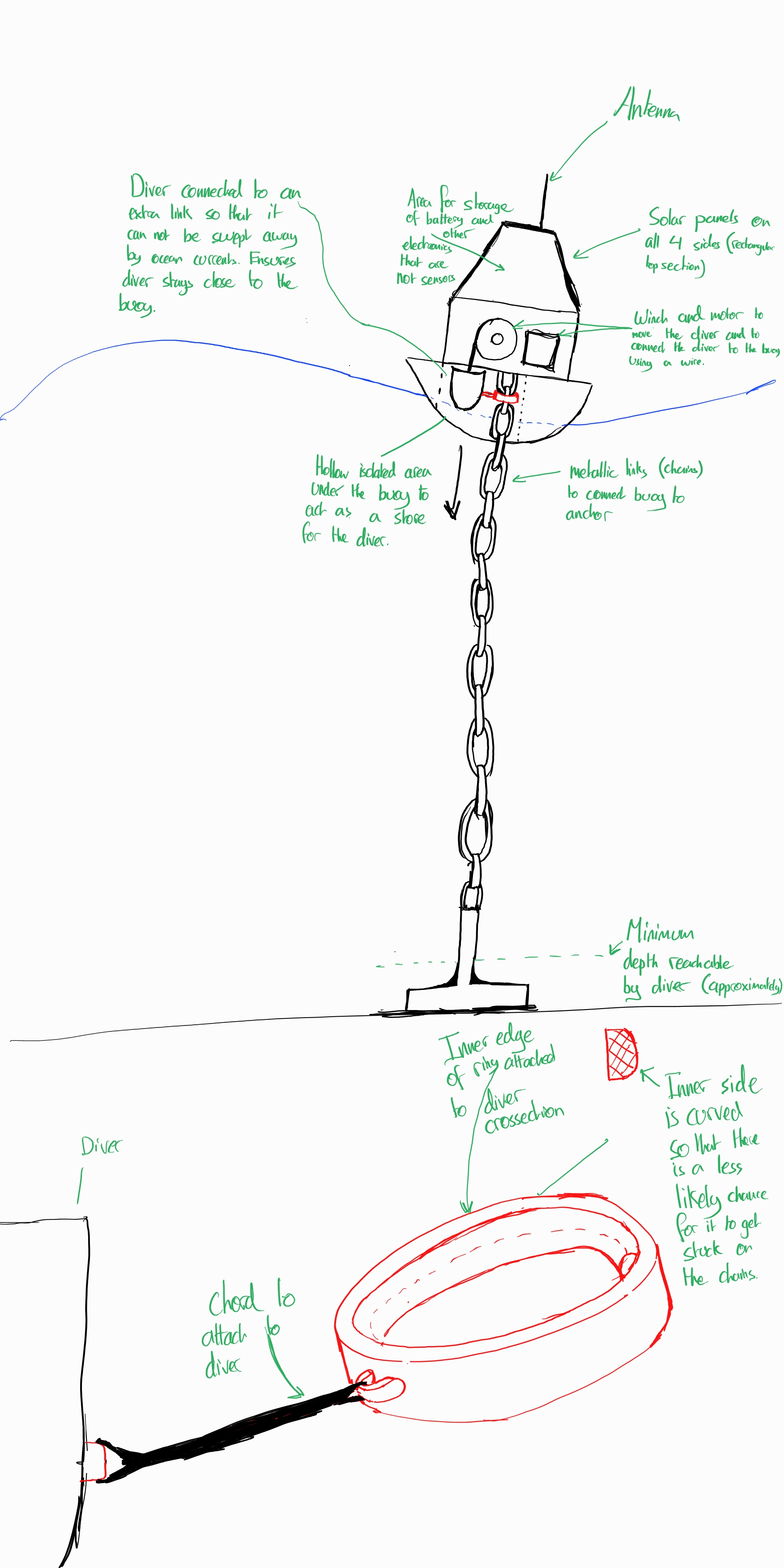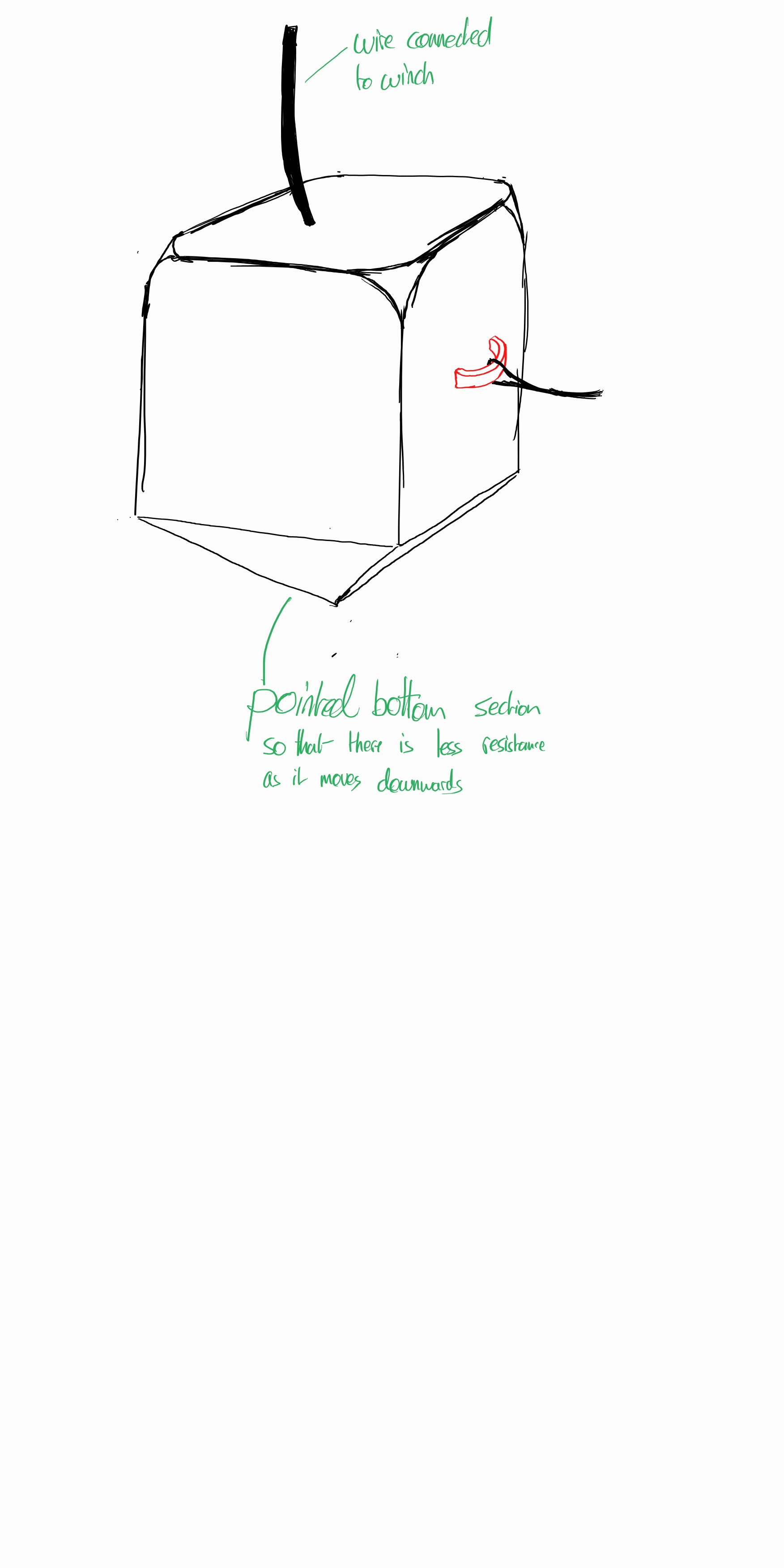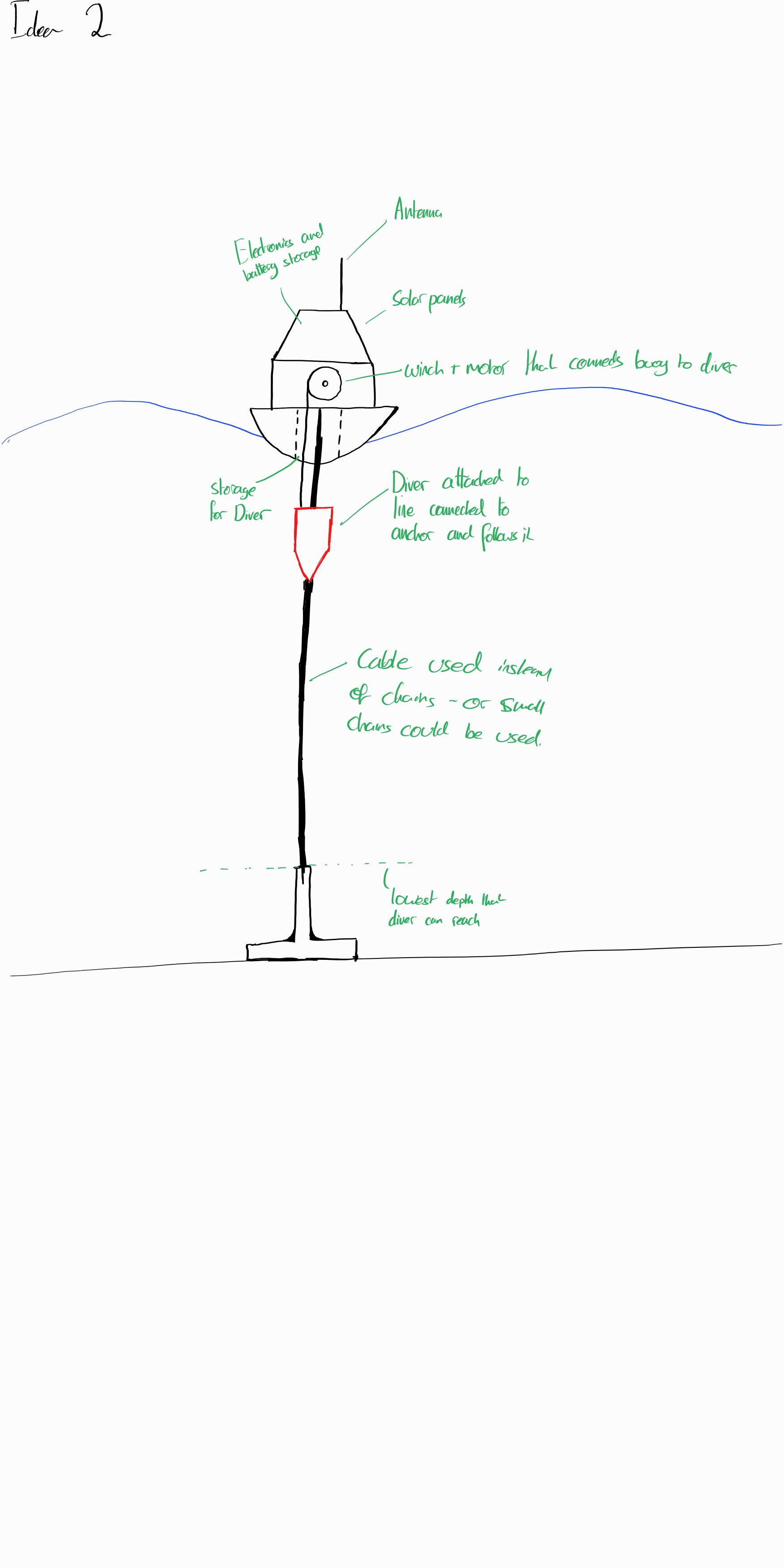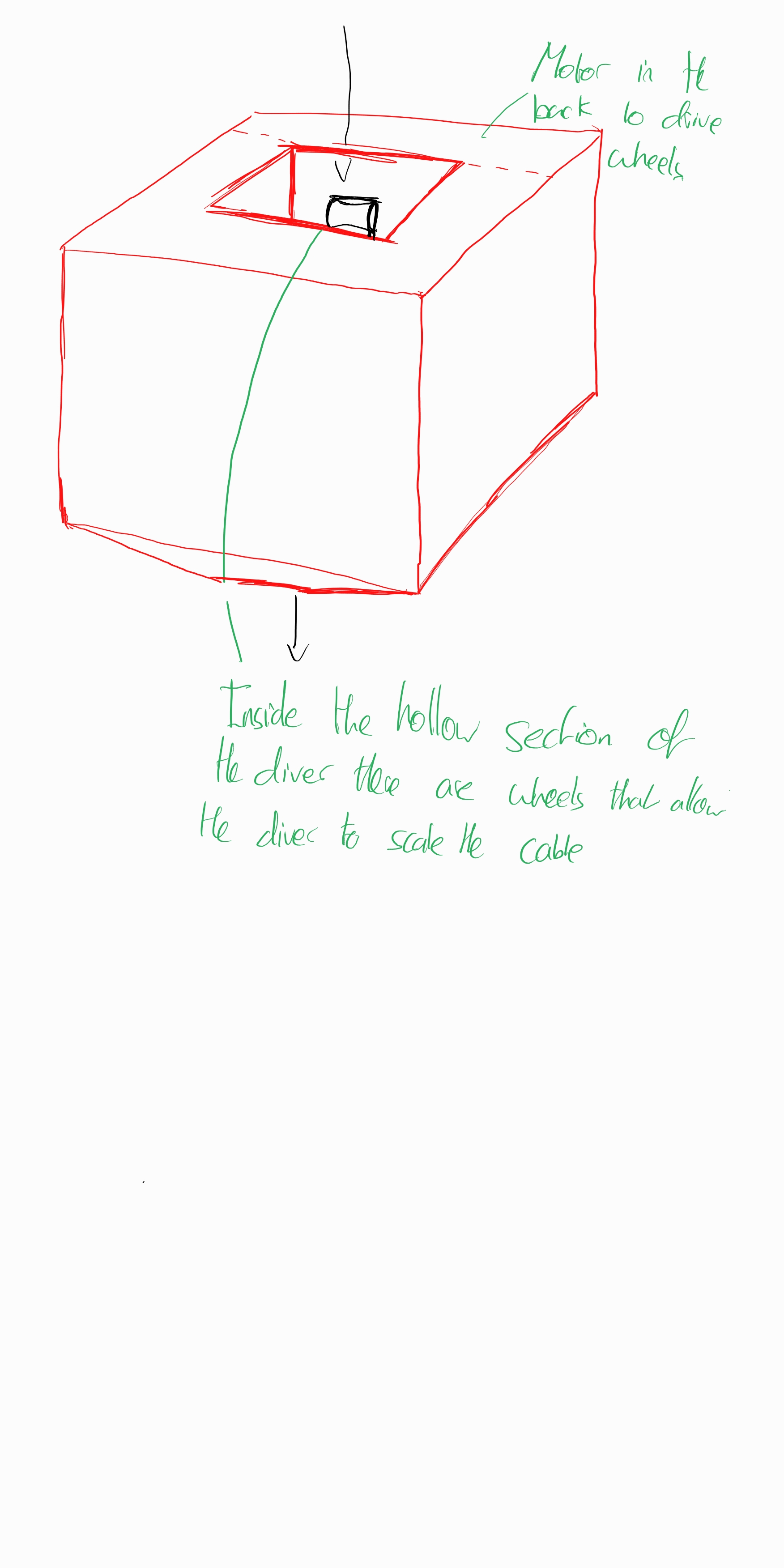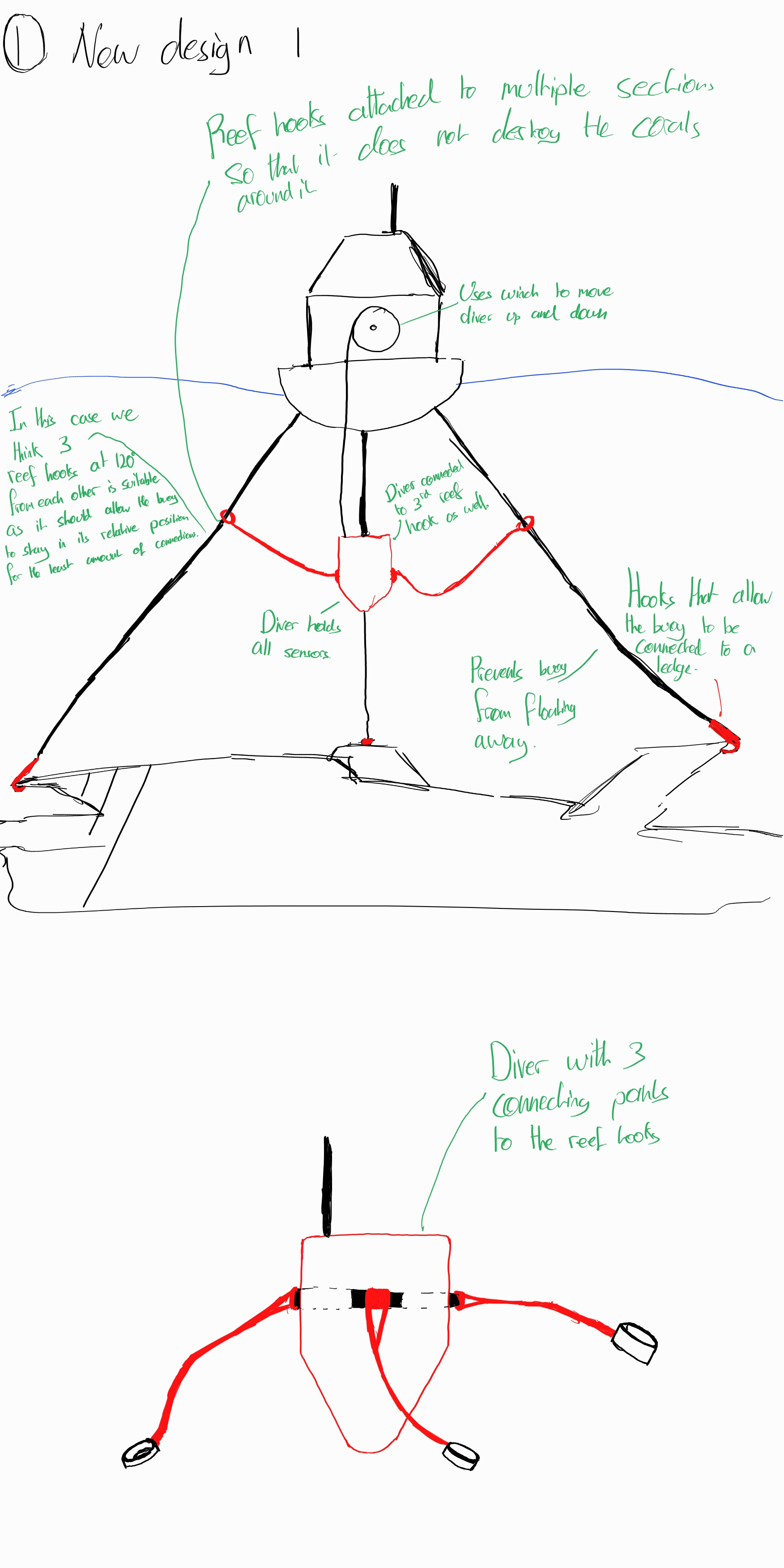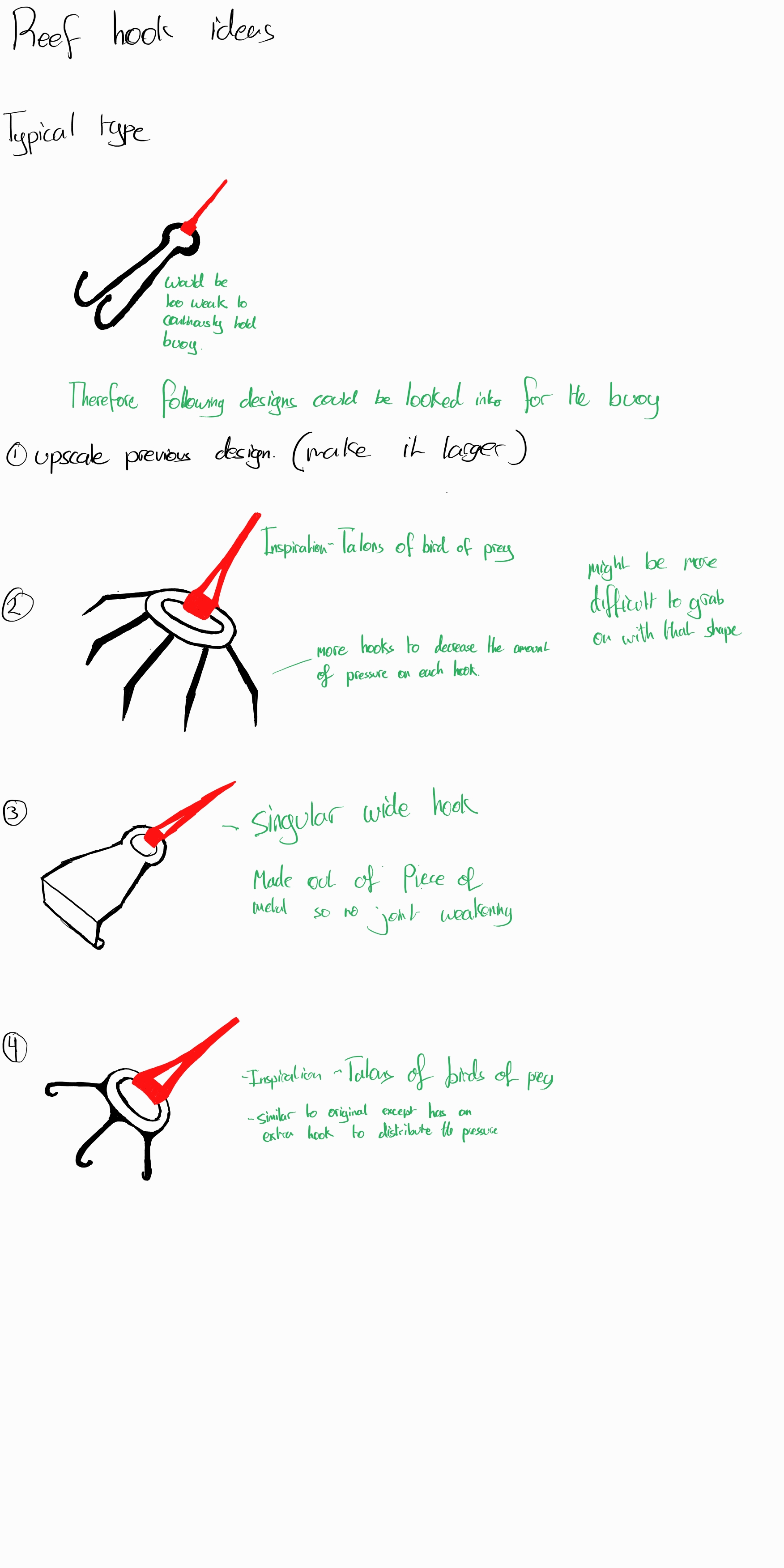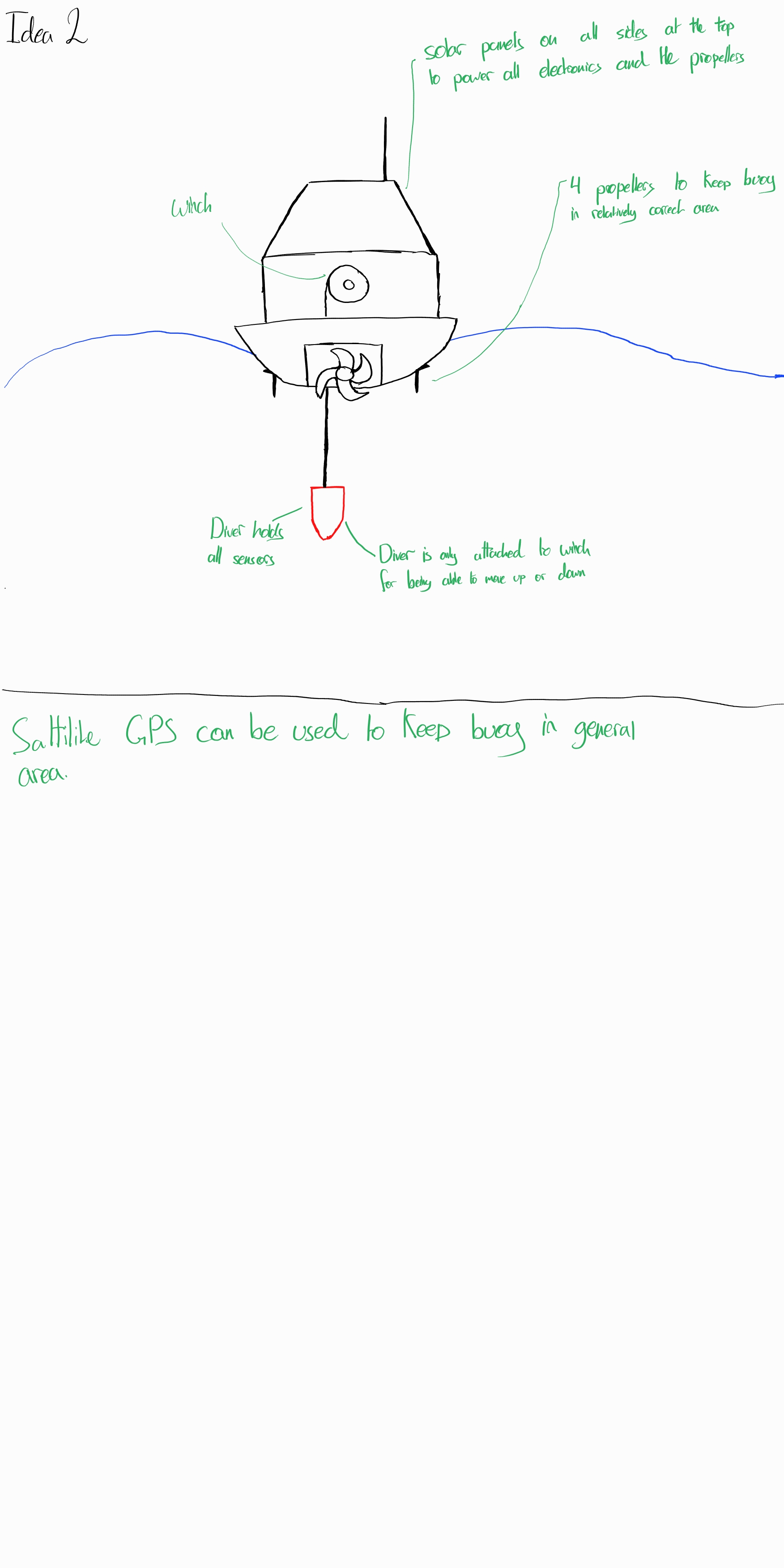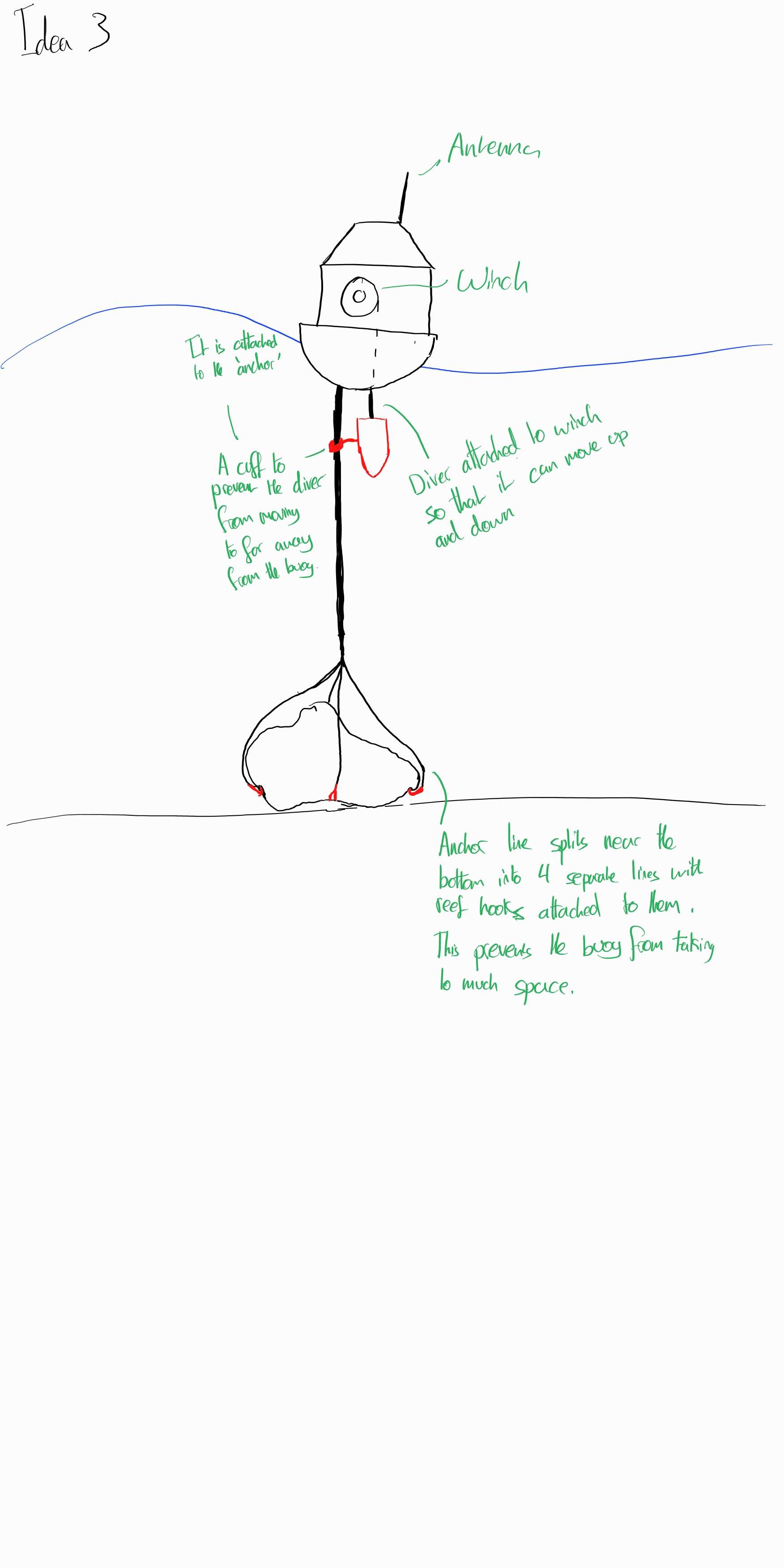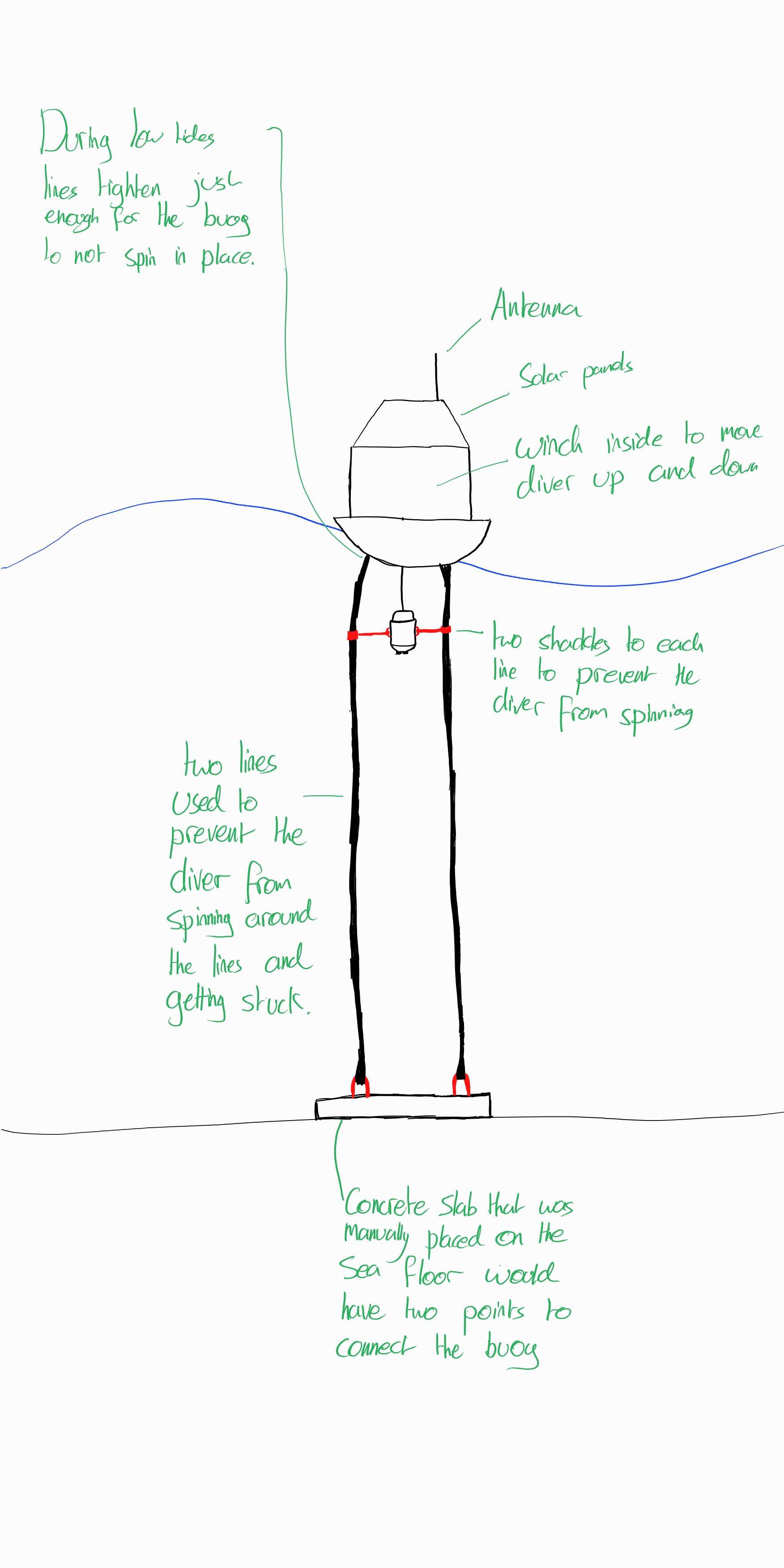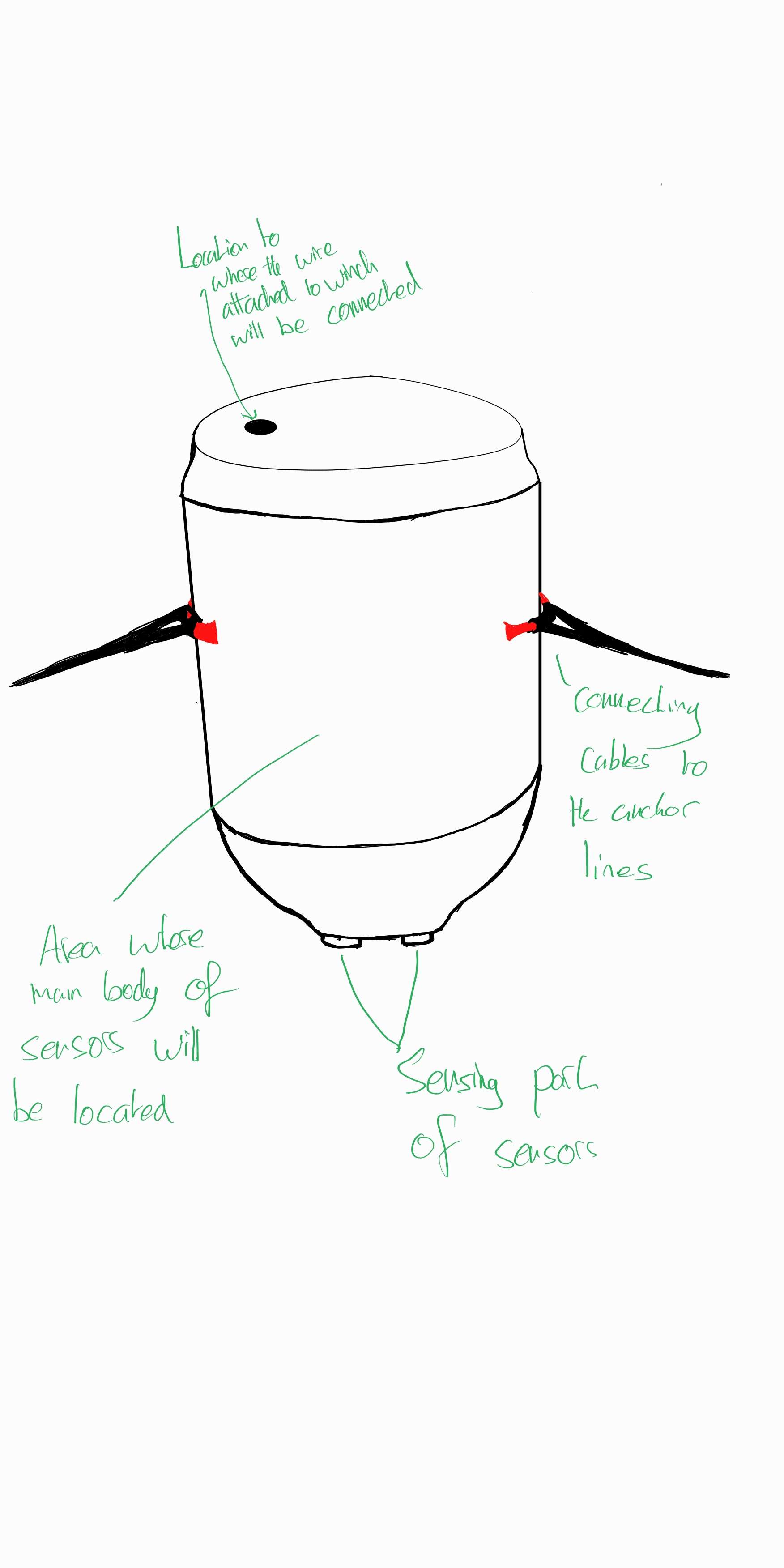PRE2022 3 Group7
Buoy based remote sensing
Group members
| Names | Study | ID | |
|---|---|---|---|
| Max van Wijk | Electrical Engineering | 1736418 | m.h.o.v.wijk@student.tue.nl |
| David van Warmerdam | Electrical Engineering | 1714171 | d.s.v.warmerdam@student.tue.nl |
| Luka Tepavčević | Electrical Engineering | 1720996 | l.tepavcevic@student.tue.nl |
| Bob Verbeek | Biomedical Engineering | 1752510 | b.m.verbeek@student.tue.nl |
| Yu-Hsuan Lin | Computer Science | 1672363 | y.lin1@student.tue.nl |
| Saskia ten Dam | Psychology and Technology | 1577328 | s.e.t.dam@student.tue.nl |
Seperate pages of important information
Logbook page: This page contains the logbook, how much time everyone spend per week, and the general planning of group 7.
Interview page: This page contains the interviews that have been conducted by group 7, a summary of each interview, as well as some small descriptions of the interviewees to give some background.
Weekly research and activities : This page contains, for every week, a summary and overview of the deliverables of group 7. The contents of the page have been structured in chronological order. <==== For the tutors, this is where the document that was originally on this page resides now. This has been done for us to start making an overview of how the final wiki page will look.
!!IMPORTANT!!
The order and contents of all of these sections is NOT set in stone, if you feel like a section should go somewhere else, have different content, or be outright removed, please do so (with consent of course).
Introduction
What will be written here:
- A quick summary of coral reefs:
- What types or coral reefs there are.
- Why coral reefs are important.
- What is currently done to protect coral reefs, and what is still missing (state of the art). <= most important part as this is what we're trying to solve
Order of how it could be done.
- Why coral reefs are important. + why do we need to look after them.
Coral Reefs are amongst the most important natural marine structures in the world, affecting both ocean life and land life (especially coastal areas). For ocean life, coral reefs act as a shelter and a breeding ground, being home to thousands of different species of marine life, including fish, crustaceans, corals and larger marine animals ( such as sharks). On the other hand, for on land, coral reefs protect the coastlines from powerful waves and storms. Furthermore, coral reefs bring about many jobs, and therefore many people rely on coral reefs for their lively hoods.
- Types of Coral Reefs
There are three main types of coral reefs currently, fringing reef, barrier reef and an atoll reef. Fringing reefs are the most common and they are found right along the coast line. They are also the most common type of reef, amounting to approximately 50% of the total reefs in the world[1]. They are considered to be the 'youngest' among the 3 main types of coral reefs[2]. An example of a Fringing Reef is the Ningaloo coral reef, found on the western coast of Australia and is one of the largest fringing reefs in the world. Following this, a barrier reef is considered to be the stage of the coral reef that comes after the fringing reefs. They are usually parallel to coastline but are separated by a deep body of water. An example of such a reef is the Great Barrier Reef (GBR) located on the east coast of Australia which is considered to be the largest coral reef in the world. Finally, an Atoll reef is a type of coral reef that is usually older than barrier reefs, but they only form around smaller oceanic islands. An example of an atoll are many of the smaller reefs around the Maldives.
Although all these coral reefs are very important to us as humans and marine wildlife, approximately 75 % of these reefs are threatened[3], mainly due to human influences. Some of the factors that contribute the most to the destruction of coral reefs are the are climate change and pollution through disposal of garbage in the oceans. Climate has the biggest impact on the corals specifically due to global warming and ocean acidification. Corals require specific water conditions to grow properly, and if said properties of the water change, then it will inadvertently start to either impede the growth of the corals or it might even start the kill off said corals.
- What coral reef we will focus on and why
For this research it was decided to focus on the Great Barrier Reef due to the fact that it was one of the most threatened coral reefs in the world.
- What is currently being done and what are we trying to do.
Problem Statement
After having done the above mentioned research into coral reefs, their importance, how we can defend them, and how they are currently protected, we have come up with a method of supporting the current researchers by creating a new method of data gathering. We have designed a buoy based sensing system that is comprised of a diver, which is able to move up and down through the water, and a buoy, to where this diver is attached. This buoy would be able to carry any type of sensor that a particular researcher may desire, and measure a particular parameter at a self specified depth. The buoy would be able to send this data back to the researcher in real time, removing the need for any human intervention that could disturb the coral reef. These disturbances, mainly caused by boat engines, are a large problem for the marine inhabitants of these coral reefs, as they increase the chance of body malformations, development issues or disorientation to the fish that are present[4].
Not only does this new design add a new data colletion system to the already existing methods of data gathering in coral reefs, solving, or at least lessening the impact of the gap in reliable and human free data in coral reefs. But it also paves a path for new improved design options that could build of off our buoy based remote sensing design. Because of these reasons, we believe that our design is able to solve the aforementioned problems.
USE Analysis
As the project is focused around the notion of USE (user, society, enterprise), it is of great importance to start by connecting to the future users of our product before finalizing the design. We have done this by interviewing marine biologists and researchers who are closely related to the topic of coral reefs. The interview page shows the questions asked, as well as a quick summary of the interviewee and the interview itself.
Users
As mentioned previously, our main users, and subsequently the first party stakeholders, are researchers focused on coral reefs, marine biologists and scientific divers. They are the foremost people who have the means and desires to stop the deterioration of coral reefs. Therefore, they are the people who will most likely be the ones using our design. These researchers have also been used as our main source of information when it comes to the overal design of our product, not only by reading articles about the already present research, but also by interviewing them and asking specific questions regarding our design. Other stakeholders of our design include funders of our design, second party climate researchers, people living close to coral seasides and, in some sense, the government. None of these people will ever use our design. However, they will all benefit from our design being implemented. Funders, and subsequently the government (if they also fund the project), will make a profit of off the deployment of our design. Other climate researchers will benefit from the increase in accurate data. Finally, inhabitants of the seaside coral reefs will be able to keep their businesses alive, be they fishing or tourism.
Society
Our buoy based remote sensing technology will definitely effect society in a positive manner. More reliable data is able to be gathered from one of the most important oceanic locations on the earth. This, in turn, will make it so that researchers are becoming more capable in creating more realistic predictions about coral reefs in general, giving these reefs a higher change of prolonged, or even lasting, survival. Furthermore, as has been discussed in the introduction, coral reefs are natural wave stoppers. This means that, as global warming and rising sealevels become more and more extreme, these coral reefs will stay as they are and help prevent some of the damage that these catastrofic events can cause, helping society as a whole.
Enterprise
Something about companies
Research
I think here we could have :
- Types of potential sensors that need to be used
Moscow List
| Must Have | Should Have | Could Have | Wont Have |
|---|---|---|---|
| (Salt) water proof | The ability to change the depth of the diver (The diver contains the sensors) | The ability to move the “base” | The diver can clean the coral reef at the same time |
| The ability to float on water (The base of the buoy) | The ability to transmit data directly to some external server or computer in real time | The ability to share data with other buoys of the same type (swarm technology) | the ability to reach measuring depths for outer reefs (reaching depths of around 2000m) |
| High Visibility to avoid collisions with boats | An energy source to power itself (Self-powering) | Be easily accessible for repairs and other things which might need to | Diver can move actively through the water |
| To be able to reach the depths of the inshore coral reefs | Some way of keeping the buoy in the approximate same geographical location | The ability to configure and change which sensors can be put onto it so that the users can change out the sensors based on what they might want to specifically look at | Cable connection with base is made of glass fibre |
| A way of avoiding damaging coral structures | The diver should be able to dive down straight below the base (perhaps not straight down but parallel to anchor) | Be made of renewable materials | |
| Be build as cost effective as possible | A way for barnacles and others sealife don’t attach themselves to the device | ||
| Provide long term monitoring data | Be able to reach measuring depths of around 100m for inshore reefs. (10bar) | ||
| Should be able to carry sensors (the weight should be accounted for) | |||
| The buoy has a battery that in no way can harm its environment |
Focused MoSCoW list
The following MoSCoW list illustrates the aspects of the previous MoSCoW list that we will focus on for this project.
| Must Have | Should Have | Could Have | Wont Have |
|---|---|---|---|
| (Salt) water proof | The ability to change the depth of the diver (The diver contains the sensors) | The ability to configure and change which sensors can be put onto it so that the users can change out the sensors based on what they might want to specifically look at | The diver can clean the coral reef at the same time |
| The ability to float on water (The base of the buoy) | Some way of keeping the buoy in the approximate same geographical location | the ability to reach measuring depths for outer reefs (reaching depths of around 2000m) | |
| To be able to reach the depths of the inshore coral reefs | The diver should be able to dive down straight below the base (perhaps not straight down but parallel to anchor) | Cable connection with base is made of glass fibre | |
| A way of avoiding damaging coral structures | Should be able to carry sensors (the weight should be accounted for) | Diver can move actively through the water |
Solution Encyclopedia
| Problem | Possible solution(s) |
|---|---|
| (salt) water proof | - Adding saltwater proof paint around the base and diver
- Making the diver air tight to isolate electronics from the outside |
| The ability for the base to float on water | - Making the base large and light enough so that it has the ability to float on water
- Add inflatable material to the base - The buoy should be able to displace the equivalent volume of water that equates to its volume. This can be done by have a combination of a solid material along with pockets of air to prevent the buoy from sinking due to its weight. |
| Being able to reach inshore depths | - Make the winch large enough and the wire long enough to reach such depths
- The wire should also be able withstand the pressure from the water and still work while also being able to lift the diver or support its weight - Make sure the diver is able to withstand inshore pressures |
| The ability to change the depth of the diver | - Use a winch to change the depth of the diver
- Implement small motors on the diver to change its own depth - Use an automatic submarine like diver to get to the expected depths. - Using the weight of the diver to move downwards and a propeller to allow the diver to move upwards easier or decrease the weight acting on the winch |
| Keeping the buoy in the same aproximate location | - Make use of an anchor attached to the base
- Have propellers and motors on the buoy that allows it to move and a GPS so that it can adjust its location if it moves too far |
| The diver should be able to dive down straight below the base | - Add a guiding ring to the diver to make sure it follows the anchor
- Make the diver move along the anchor line by means of some form of motor |
| Should be able to carry sensors | - Make the diver large enough to carry different types and sizes of underwater remote sensing equipment, while keeping the weight as low as possible
- Have enough connections to carry multiple types of sensors in the diver. - Have The diver be more customisable instead of only being able to put sensors into a per-defined casing. |
The design of the buoy
Design Process
Describe how, for each part of the design, how the designs changed over time, and why these changes where made.
The main focus of the design process was to design a diver that would be attached to a buoy which would be lowered through the water whilst carrying sensors to be able to monitor the water quality at different depths.
Anchor
describe the transition from anchor to reef hook to multiple reef hooks.
The original ideas for the buoy and diver included an anchor as it was found that anchors were the most suitable for deploying the buoys in the coral reefs such that they would not be swept away by tides and wind. Furthermore it was considered to be the easiest and most efficient way to deploy a buoy. But whilst doing further research and consulting with interviewees that could have been possible users, it was found out that for coral reefs, anchors were not as viable of an option due to how destructive the process on anchoring would be. Furthermore in many reefs anchors are also banned. Therefore with this new found knowledge, the original designs were further developed to be suited to being deployed in coral reefs. Alternatives were found to replace the anchor, with the most promising alternative being mentioned by one of the potential users, which was the use of a reef hook. The only issue for the designs was that one reef hook would not be sufficient to properly anchor the buoy as such multiple reef hooks were included in the designs.
Cables
from chains to cable.
Winch
State why this has basically not changed throughout the whole project + maybe say why only 1 winch was chosen.
Diver
The diver needs to be designed correctly as it needs to be able to dive down to the specified depth without too many problems. It should also fit the sensory the user would want.
One of the most important things is that it should dissipate as less as water to decrease buoyancy for which the diver can easy propagate the water. Knowing Archimedes principle: the buoyancy force is equal to the weight of the water the object is dissipating - the diver should be heavy enough and shape does not matter for this, only the density.
To know what the volume and mass of the buoy should be the following equations are used:
Fg=m g[5] ,
where Fg is the gravitational force working on the object, m is the mass of the object and g is the gravitational acceleration, and
Fb=ρfluid V g[5] ,
where Fb is the buoyant force, ρfluid is the density of the fluid the object is in and V is the volume of the object which is submerged in the water. As V would be the full volume of the diver (as it is fully submerged) the following equation can be derived:
m/V=ρfluid,
this is the case of an equilibrium case. So as long as m/V is greater than the density of the fluid, the diver will sink.
To know the density of the water more information is to be known in order to determine this, as the density of sea water is a function of the temperature, depth (thus pressure) and sanity. Average sea specifications of the great barrier reef:[6]
- Water level is around 30 meters (average); which is around 3.5 bar; account for 5 meters of error.
- Salinity level around 35 g/kg
- Temperature around 21-28 (celcius); 24.5 on average
The density thus results in: 1023.65 kg/m3 [7]
Now the mass and volume of the diver need to be determined. An important constraint is that it should be big enough for multiple (multipurpose) sensors. Two multipurpose senors where chosen for reference. Their dimensions and weight are: (length x diameter mm): 295x38,5; 330g [8] ; 300x35; 410g [9] . 20mm need to stick out to make sure the measurements can be made. The probes will be in the diver and data from these probes will be sent to the buoy, so having only the probe dimensions as reference is sufficient. With these constraints given as reference, multiple design where made:
Diver design 1: as for all models, the 2 cylinders seen near the end are the multipurpose sensors taking for reference as explained earlier. This design is simple, but gives plenty of space for more and other sensors if needed. The shape however, is not particulary aerodynamic. (Total volume = 0.01110 m3; Material volume = 0.007568 m3)
Diver design 2: this design was more focused on space rather than aerodynamic. Thus it gives sufficient space, but the diving could be slower than the other designs. (Total volume = 0.002397 m3; Material volume = 0.006899 m3)
Diver design 3: this design was more focused on aerodynamic rather than space. Thus it gives it will dive down fast, but with rather less space than the other designs. (Total volume = 0.01035 m3; Material volume = 0.004378 m3)
In order to determine the mass, a material should be chosen. The following specifications where determined when solving this problem: it should be heavy enough with the volume given of the diver; it should be resistant against salt water; it should be easy to manufacture if the design is rather complex; it should withstand the pressure (also due to thickness of the diver).
Possible material include metals and plastic [10]:
- Metal: Brass, bronze, 316 stainless (also known as A4 stainless) steel, titanium are all good options.Titanium is the best metal to use, but is expensive
- Plastic: POM Delrin (a brand name of acetal)
- 3D printed: difficult to make waterproof
Computer Numerical Control (CNC)[11] machines can be used to create complex metal part. These machines carve structures into metal, thus it can provide specific parts needed in our model, but not entire structures. With the use of Direct Metal Laser Sintering (DMLS)[11], complex 3D metal structures can be developed. Thus stainless steel can be used even though our models are not strictly simple structures.
Due to the simple shape and space given, design 1 was chosen out of the design. With the density of stainless steel 316 being 7980 kg/m3 [12] , this material was chosen. With this, the final weight of the diver is (0.007568 * 7980) 60.39 kg and with sensors, 61.13 kg.
Check:
m/V>ρfluid;
m/V = 61.13/0.01110 = 5507.445 kg/m3;
ρfluid = 1023.65 kg/m3;
The diver will sink!
Base
Shape, dimensions and weight changes that may have happened.
Initial Designs
Idea 1
Concept:
This initial concept shows a buoy that is connected to an anchor by chain. Most of the electronic equipment which does not include the different sensing equipment would be within the main frame of the buoy above the water. Whereas the sensors would be situated within the diver which would be lowered into the water to take measurements at different depths. The diver would be separate from the buoy but it would be connected to a winch within the buoy so that the depth of the diver can be changed accordingly. The diver is linked to the anchoring line by means of a shackle type object. This would prevent the diver from being swept away by currents.
Flaws:
- Uses an Anchor, in many Coral Reefs, anchors are banned because they would destroy large amounts of coral that would take many years to regrow.
- Chains have to be longer than the average depth where the buoy is situated due to the tides. This could mean that the chains could potentially also destroy the corals around the anchor.
- Shackles could potentially get stuck between the chain links if the chains are too large.Idea 2
Concept:
The second concept uses the idea that the diver is able to control its own depth by using a motor that is fixed inside of the diver. This would mean that there would be less stress on the wires (attached to the winch) that connect the diver to the buoy as the wires would not have to be able to withstand the weight of the diver by itself. The chains connecting the the anchor are replaced with a cable/ line such that the wheels used to move the diver would always stay in contact with the cable at all times. Furthermore the cable would go through a hollowed out gap, as seen in the second image below, to prevent an asymmetrical distribution of weight as much as possible to prevent the diver from detaching from the the cable and being swept away.
Flaws:
- Uses an Anchor, in many Coral Reefs, anchors are banned because they would destroy large amounts of coral that would take many years to regrow.
- Motor inside of the takes up extra space which could have been used for different sensors.Developed Designs
Developed Idea 1
Concept:
This Developed Design uses Reef hooks as compared to the initial anchor. Therefore it would be attached to ledges rather than being deployed down which would minimise the damage done to surrounding corals. The Design would use three separate reef hooks attached in a wide area at approximately 120 degrees from one another such that the buoy would stay in an approximately central location with reference to the locations where the reef hooks are attached. Furthermore the diver would be connected to all 3 lines to act as guides so that the diver is unable to be swept away as it is lowered into the water.
The second image shows potential ideas for reef hook designs that could be used be used. This was investigated as conventional Reef Hooks were design for divers to hook on briefly so that they would not get swept away. As such the design had to be adjusted to be able to last longer underwater holding the buoy in place.
Flaws:
- Reef hooks are located further away from one another. Therefore a lot of space would be taken up underwater by the buoy, this might make it more difficult for larger marine animals to swim in the general location of the buoy without potentially dislodging one of the reef hooks by accidentally crashing into one of the lines.
- The 3 extra cables that connect the diver to the lines (preventing diver from being swept away) would have to be very long for the area near the bottom. This would mean that the diver would either have to be able to retract the cables into it, taking up valuable space that could have been used for carrying sensors. Or the cables would have to be left to stay out all the time, which would bring about the problem that the cables would be left to float all the time unless the diver is at its maximum depth. This could mean that the cables could degrade quicker.
- The Reef Hooks would need to be setup manually by divers. This would bring about the problem of how getting suitable divers to get to the depths required along with the safety of the divers and the time it takes for the setup.Developed Idea 2
Concept:
This concept removes the need for anchoring and instead has the buoy automatically move to the desired destination through the use of GPS from satellites. The reason it is thought to be feasible is because coral reefs act as natural wave barriers due to the fact that they are able to diminish the power of waves coming from the ocean by approximately 86 - 97%[13]. For this design the diver is not guided by any line connected to an anchor or reef hook. Instead it is will be left to sink due to its weight, but the winch will control the depth at which the diver is allowed to ago, along with pulling it back up towards the surface.
Flaws:
- Much higher power consumption. A buoy with this design would have to consume a lot more power as it would have to automatically self correct its position using propellers so that it can stay the correct relative location that the user would want to measure, without being slowly swept away. As such this might impact the overall performance of the sensing equipment and the buoy overall.
- In the case of tropical storms, there is a chance for the buoy to be tipped over/ upside down as it is not connected to anything underwater. Even weaker tropical storms or just stronger winds might be able to tip the buoy over.
Developed Idea 3
Concept:
The concept for this design is a mix between using an anchor and reef hooks. It uses a large object, such as a boulder, underwater as a 'natural' anchor to which 4 reef hooks are attached to it. This way it does not introduce a very heavy load that could destroy the corals underneath it. Otherwise the idea has similar elements to the first initial design when it comes to the diver.
Flaws:
- Reef Hooks would have to be manually secured by divers, therefore it would be important to pay attention how deep the location is because certain depths require more experienced divers.
- The location where the buoy would have to be surveyed first to check if a 'large object such as a boulder is within the vicinity to act as the 'natural' anchor. If the boulder thought to have been acceptable is too light, then it could even act as an anchor, destroying the surroundings.Final Design Choice
Concept:
This design was made based on issues that were found from both the interviews and the models created. The main issue solved from the interviews was given by an interviewee who mentioned how although anchors are not allowed, usually a concrete slab would be an acceptable alternative. This stems from the fact that typical anchors would be dragged across the seafloor, but a concrete slab would be too heavy to be moved and as such would stay in place.
The second problem that was found from the simulations was how the diver could become tangled with the anchoring line by circling around it and interweaving the wire connecting the diver and the anchoring line. This was solved in this design by adding a second anchoring line and connecting the diver to both such that it is unable to rotate around one of the lines. Additionally the anchoring lines would be able to dynamically adjust them selves such that the buoy is unable to turn and the anchoring lines would not tangle with each other either.
Furthermore, the shape of the diver was adjusted such that it had a larger volume so that more sensors can be placed inside of it.
Flaws:
- Requires prior research on location for where the buoy will be placed.
- Would require experienced divers to safely place the concrete slab in the correct position, depending on the depth. Heavier concrete slabs would have to be lowered by a boat with divers guiding it. Whereas for lighter concrete slabs, a type of balloon is needed to slow down the descent of the slab.Show the final design of the buoy and state what could be further improved on the design.Potential Improvements -
- Looking into a way to automise the deploying of the buoy such that human divers are not required.
Mechanics of the Diver Movement
Describe in detail (more detailed than we have done in the design choices) how to diver will actually be able to move up and down through the water. Furthermore, talk about the limitations that the diver will have due to the chosen design (these limitations could also be a separate section for talking about the overall limitations).
Simulations
CAD stress test
Show CAD simulations, state why they are important to the design, and explain all images correctly.
Unity physics simulation
Talk about the physics simulation (showing may be difficult), explain the limitations set on the simulation, and describe what we wanted to get out of this simulation.
Reference list
- ↑ https://link.springer.com/referenceworkentry/10.1007/978-90-481-2639-2_15#Sec3_15
- ↑ https://earthobservatory.nasa.gov/images/80001/palaus-reefs
- ↑ https://news.un.org/en/story/2011/02/367552
- ↑ https://thegreentimes.co.za/wp-content/uploads/2022/01/impact-of-ocean-noise-pollution-on-fish-and-invertebrates.pdf
- ↑ Jump up to: 5.0 5.1 Young, Hugh. University Physics with Modern Physics, 15th edition. Page 401
- ↑ https://coralreeftkohli.weebly.com/great-barrier-reef.html
- ↑ https://www.wkcgroup.com/tools-room/seawater-density-calculator/
- ↑ http://www.i-scan.at/images/pdfs/iscan_ww_EN.pdf
- ↑ https://www.neroxis.ch/wp-content/uploads/2020/04/DPM-18-082-002-E-KAPTA-3000-AC4_Brochure_EN.pdf
- ↑ https://www.bluetrailengineering.com/post/choosing-materials-for-use-in-the-ocean
- ↑ Jump up to: 11.0 11.1 https://www.protolabs.com/resources/guides-and-trend-reports/metal-fabrication-a-guide-to-manufacturing-metal-parts/#HardMetals
- ↑ http://www.dsstainlesssteel.com/stainless-steel-density/
- ↑ https://www.usgs.gov/news/national-news-release/coral-reefs-are-critical-risk-reduction-adaptation
